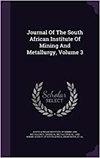Stakeholder inclusion in the design and development of equipment for the modernizing mining sector in South Africa
IF 0.9
4区 材料科学
Q3 Materials Science
Journal of The South African Institute of Mining and Metallurgy
Pub Date : 2023-06-08
DOI:10.17159/2411-9717/2253/2023
引用次数: 0
Abstract
A people-centric, systematic approach that involves different stakeholders is considered necessary to successfully address changes associated with modernizing the South African mining industry. In this paper we discuss the inclusion of various South African mining industry stakeholders, particularly the employees, in equipment design and development processes. Data was acquired through a literature review and inputs from South African mining industry stakeholders through focus group discussions, interviews, and an online survey. It was suggested that some of the areas that could be improved by the inclusion of employees in the process are design quality, ergonomics, equipment acceptance by the workforce, safety, efficiency, skills, insight into context of use, and early design iterations and identification of problems. Among the issues considered to be barriers to inclusion were lack of buy-in, lack of resources, difficulty in manufacturers accessing the mines, difficulties in involving too many people, intellectual property concerns, and unavailability of mine employees due to their key responsibilities. Identified critical factors in the equipment design and development process include iterative design, stakeholder participation throughout the process, needs analysis through consultation, and change management. A guideline was developed for worker inclusion in equipment design and development that could be used by the South African mining industry. The study identified several economic and social benefits of including stakeholders in the early stages of design and development. It is recommended that the South African mining industry considers using the developed guideline.将利益相关者纳入南非采矿部门现代化设备的设计和开发
为了成功应对与南非采矿业现代化相关的变化,有必要采取以人为本、系统化的方法,让不同的利益相关者参与进来。在本文中,我们讨论了在设备设计和开发过程中纳入南非采矿业的各个利益相关者,特别是员工。数据是通过文献综述和南非矿业利益相关者通过焦点小组讨论、访谈和在线调查提供的投入获得的。有人建议,通过将员工纳入流程,可以改进的一些领域包括设计质量、人体工程学、员工对设备的接受度、安全性、效率、技能、对使用环境的洞察、早期设计迭代和问题识别。被认为是包容性障碍的问题包括缺乏认可、缺乏资源、制造商难以进入矿山、难以让太多人参与、知识产权问题以及矿山员工因其关键职责而无法参与。设备设计和开发过程中确定的关键因素包括迭代设计、利益相关者在整个过程中的参与、通过协商进行的需求分析以及变更管理。制定了一项可供南非采矿业使用的设备设计和开发中工人参与的指南。该研究确定了在设计和开发的早期阶段让利益相关者参与进来的几个经济和社会效益。建议南非采矿业考虑使用制定的指南。
本文章由计算机程序翻译,如有差异,请以英文原文为准。
求助全文
约1分钟内获得全文
求助全文
来源期刊
CiteScore
1.50
自引率
11.10%
发文量
61
审稿时长
4-8 weeks
期刊介绍:
The Journal serves as a medium for the publication of high quality scientific papers. This requires that the papers that are submitted for publication are properly and fairly refereed and edited. This process will maintain the high quality of the presentation of the paper and ensure that the technical content is in line with the accepted norms of scientific integrity.

 求助内容:
求助内容: 应助结果提醒方式:
应助结果提醒方式:


